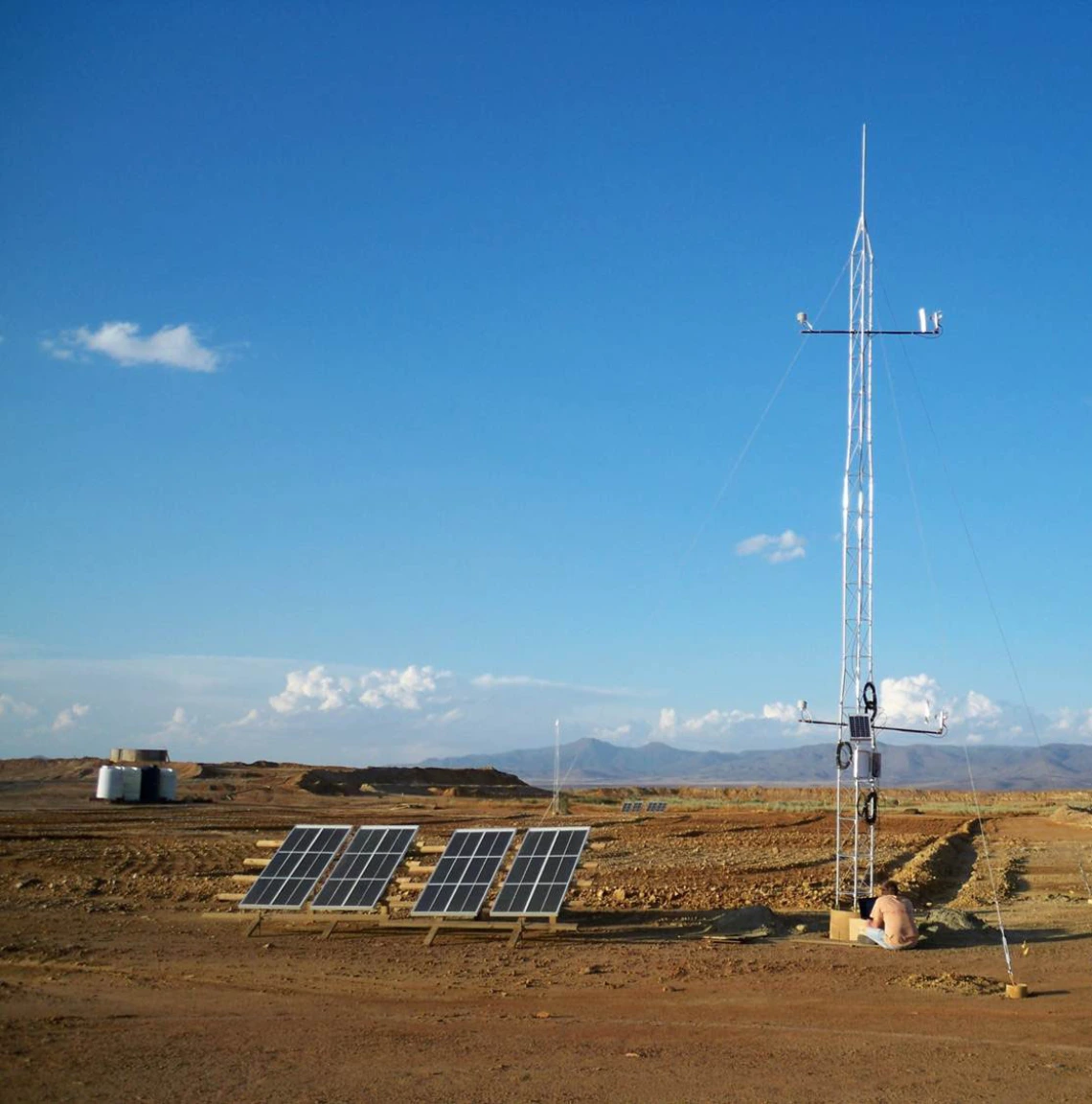
Summary
Project Leader(s):
Eric A. Betterton, PhD
Investigator
betterton@atmo.arizona.edu
(520) 621-6833
Eduardo Sáez, PhD
Investigator
esaez@email.arizona.edu
(520) 621-5369
Armin Sorooshian, PhD
Investigator
armin@email.arizona.edu
(520) 626-5858
Problem
In semiarid environments such as the Southwestern US, mining operations, including crushing, grinding, smelting, refining, and tailings management, are an important source of airborne metal and metalloid contaminants. Spent ore from mining operations is accumulated in mine tailing deposits, which are typically open to the atmosphere and thus susceptible to wind erosion. Dust particles emitted from mine tailings mobilize trace metals, which can then accumulate in soils, natural waters and vegetation. Furthermore, smelting operations release metals in the form of fume and fine particulate matter that disperses more readily than coarser soil dusts. Ancillary smelting activities and wastes may also contaminate local soils, which can then be dispersed by wind erosion. Human exposure to the dust can occur through inhalation and, especially in the case of children, incidental dust ingestion. Characterization of airborne dust in regions influenced by mining activity can provide information about sources, fate and transport, and the potential for human exposures.
At the University of Arizona, Drs. Betterton and Sáez are performing size-resolved chemical characterization of atmospheric aerosols near mining sites in Arizona. By determining the chemical components of mine tailings dust as a function of particle diameter, their research will generate source apportionment data, improve fate and transport models of airborne particulates, and better assess potential health impacts of contaminated dust.
Significance
Warmer, drier conditions predicted for the Southwestern US by climate models may make contaminated atmospheric dust and aerosols increasingly important, with potential deleterious effects on human health and ecology. These studies will provide insights into the source and fate and transport of metal-contaminated airborne particulates, with implications for human exposure.
Specific Aims
Specific Aim 1: To quantify dust emissions from mining sites including assessment of dust flux and particle size distribution.
Specific Aim 2: To assess the relationship between outdoor contaminated dust and indoor exposure.
Specific Aim 4: To perform a comprehensive analysis of source apportionment of contaminants in dust and aerosol in a smelter site (Hayden-Winkelman).
Publications
Manjón I, Ramírez-Andreotta MD, Sáez AE, Root RA, Hild J, Janes MK, Alexander-Ozinskas A. Ingestion and inhalation of metal(loid)s through preschool gardening: An exposure and risk assessment in legacy mining communities. Sci Total Environ. 2020 May 20;718:134639. doi: 10.1016/j.scitotenv.2019.134639. Epub 2019 Nov 22. PubMed PMID: 31843310; PubMed Central PMCID: PMC7176541.
Witten ML, Chau B, Sáez E, Boitano S, Clark Lantz R. Early life inhalation exposure to mine tailings dust affects lung development. Toxicol Appl Pharmacol. 2019 Feb 15;365:124-132. doi: 10.1016/j.taap.2019.01.009. Epub 2019 Jan 12. PubMed PMID: 30641074; PubMed Central PMCID: PMC6349506.
Gil-Loaiza J, Field JP, White SA, Csavina J, Felix O, Betterton EA, Sáez AE, Maier RM. Phytoremediation Reduces Dust Emissions from Metal(loid)-Contaminated Mine Tailings. Environ Sci Technol. 2018 May 15;52(10):5851-5858. doi: 10.1021/acs.est.7b05730. Epub 2018 Apr 27. PubMed PMID: 29701964; PubMed Central PMCID: PMC7025808.
Thomas AN, Root RA, Lantz RC, Sáez AE, Chorover J. Oxidative weathering decreases bioaccessibility of toxic metal(loid)s in PM10 emissions from sulfide mine tailings. Geohealth. 2018 Apr;2(4):118-138. doi: 10.1002/2017GH000118. Epub 2018 Mar 22. PubMed PMID: 30338309; PubMed Central PMCID: PMC6191178.
Youn JS, Csavina J, Rine KP, Shingler T, Taylor MP, Sáez AE, Betterton EA, Sorooshian A. Hygroscopic Properties and Respiratory System Deposition Behavior of Particulate Matter Emitted By Mining and Smelting Operations. Environ Sci Technol. 2016 Nov 1;50(21):11706-11713. doi: 10.1021/acs.est.6b03621. Epub 2016 Oct 13. PubMed PMID: 27700056; PubMed Central PMCID: PMC5089925.
Landázuri AC, Sáez AE, Anthony TR. Three-dimensional computational fluid dynamics modeling of particle uptake by an occupational air sampler using manually-scaled and adaptive grids. J Aerosol Sci. 2016 May;95:54-66. doi: 10.1016/j.jaerosci.2016.01.004. Epub 2016 Jan 22. PubMed PMID: 26949268; PubMed Central PMCID: PMC4774053.
Stovern M, Guzmán H, Rine KP, Felix O, King M, Ela WP, Betterton EA, Sáez AE. Windblown Dust Deposition Forecasting and Spread of Contamination around Mine Tailings. Atmosphere (Basel). 2016 Feb;7(2). doi: 10.3390/atmos7020016. Epub 2016 Jan 28. PubMed PMID: 29082035; PubMed Central PMCID: PMC5658141.
Félix OI, Csavina J, Field J, Rine KP, Sáez AE, Betterton EA. Use of lead isotopes to identify sources of metal and metalloid contaminants in atmospheric aerosol from mining operations. Chemosphere. 2015 Mar;122:219-226. doi: 10.1016/j.chemosphere.2014.11.057. Epub 2014 Dec 12. PubMed PMID: 25496740; PubMed Central PMCID: PMC4277909.
Videos
"Atmosphere of Learning: Dr. Eric Betterton," University of Arizona Distinguised Professor, 2013
"Formulating Solutions: Dr. Eduaro Saez," University of Arizona Distinguised Professor, 2011
Dr. Eric Betterton, University of Arizona Leading Edge Researcher, 2012
NIEHS Research Briefs
Research Brief 202: Size-resolved Chemical Characterization of Atmospheric Aerosols
Research Brief 245: Using Lead Isotopes to Identify Sources of Metal and Metalloid Contaminants

